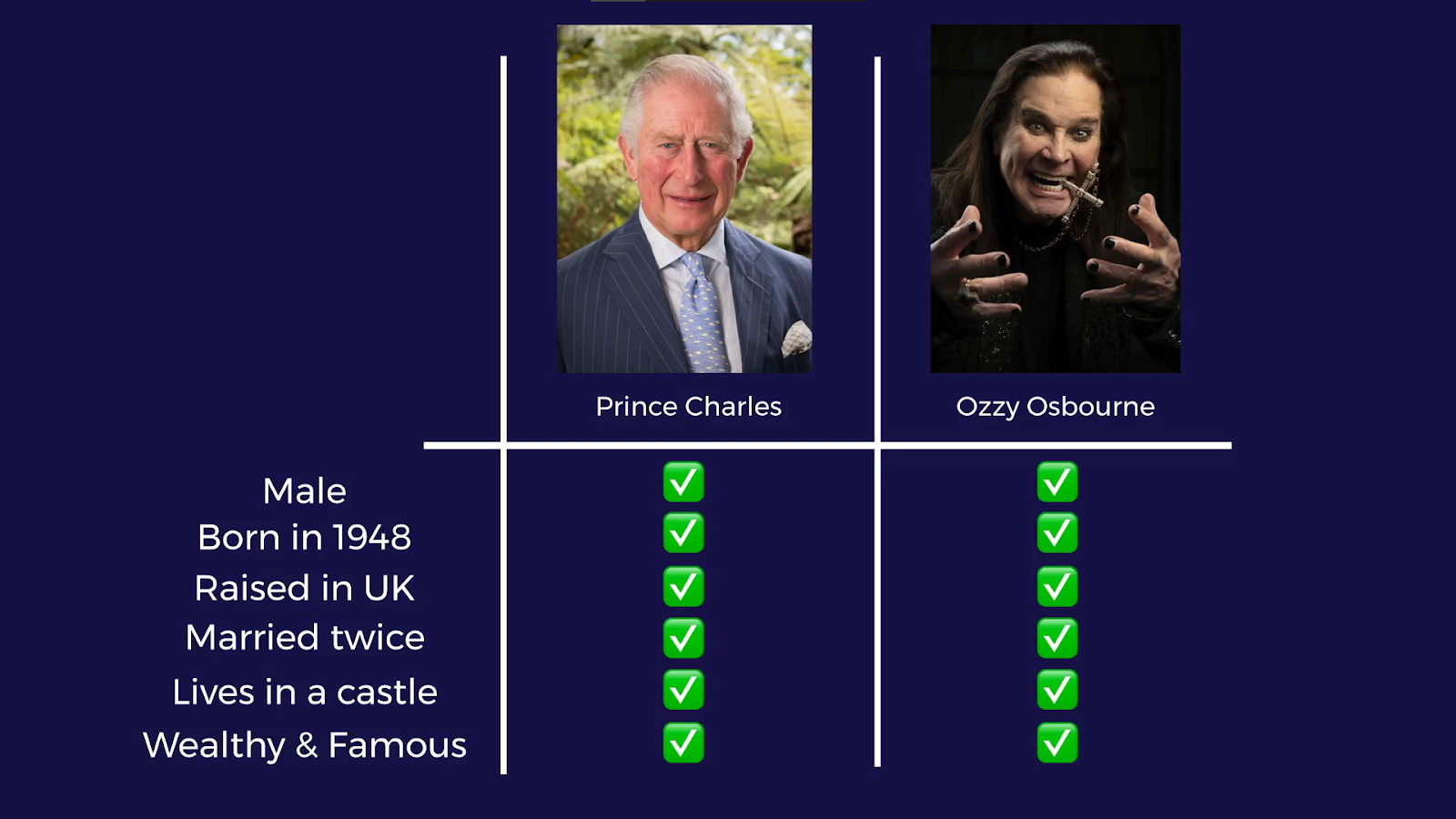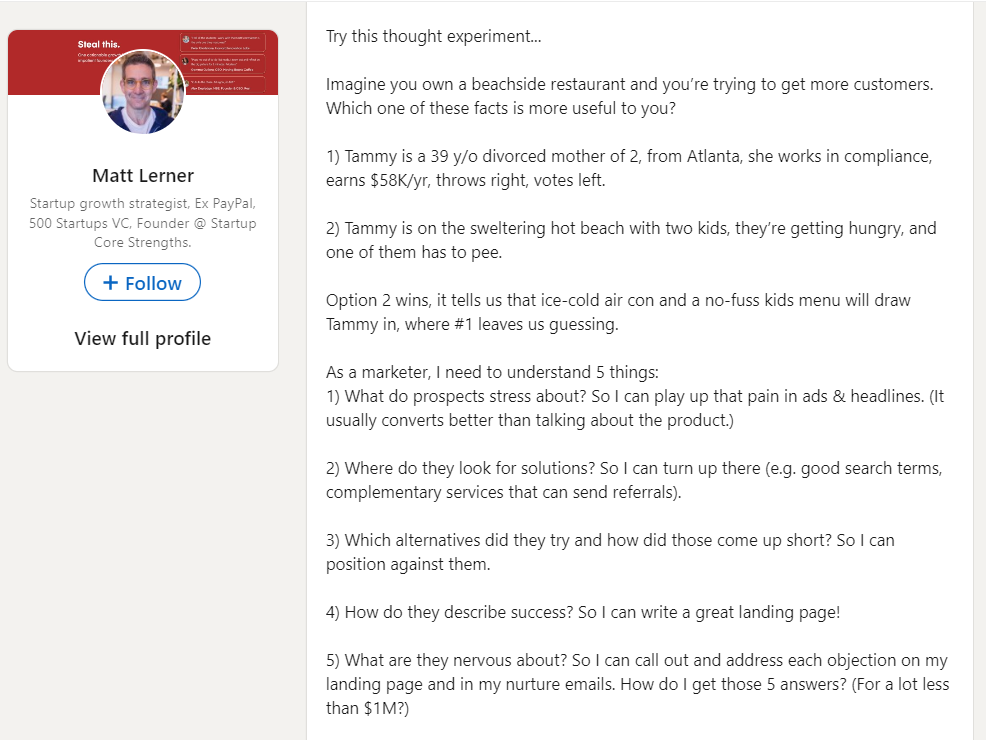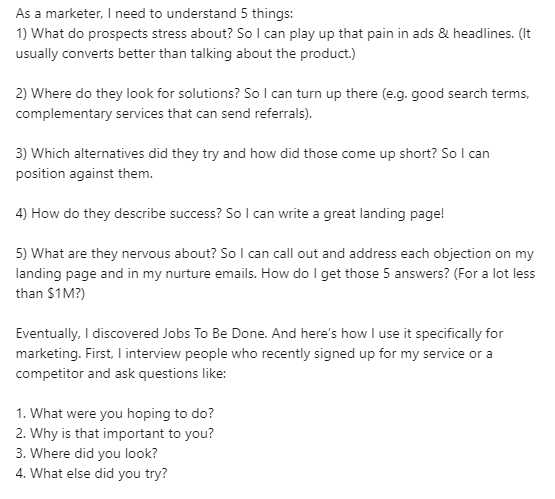I’ve talked to a lot of companies trying to launch their product, and they’ve all told me they have the so-called product/market fit.
However, after having multiple discussions with them, I usually have to tell them they’re mistaken. What they have isn’t product/market fit.
But what is product/market fit, exactly?
That’s what I want to discuss in this article, and I’m sharing a few important points of how you can tell you’ve got product/market fit. I’m also sharing illustrations of how you can achieve it. Let’s start.
Definition of Product/Market Fit
Let’s take a look at the following definition. It’s arguably the best way to describe what a product/market fit is:

The key idea from above is focused on usage: you have a product/market fit when you’re overwhelmed with usage and can’t keep up with fulfilling your customers’ requests.
That’s not what I normally see in this space.
Rather, founders come to me with a product in mind. They say customers and businesses want to buy their product because they’re happy with it.
That’s not product/market fit. At least not yet.
Even when they have a dozen or two clients and want to use more developers to build more features — that’s still not product/market fit.
What does it mean, then?
Again, product/market fit is when the market’s need for your product is greater than what you can give them.
Product/Market Fit in the Software Industry
Fulfilling software is easy — it’s easy to add more servers and more people. But true product/market fit is quite hard to achieve. You want so much usage that you can’t keep up with the demand.
However, once you have product/market fit and you’ve got resources, it becomes very easy to solve other problems. Meanwhile, if you try to solve those problems while you have product/market fit, and you run out of cash, your business will crash.
Now, we’ll take a look at a couple of examples of what people go after when they’re trying to achieve product/market fit.
Problems > Personas
When trying to achieve product/market fit, people usually go for personas instead of problems. But that’s not the right way to go.
Go after problems — solve those problems, and the demand will come.
A Tale of Two Men
I’m going to share a picture that quickly illustrates the difference between personas and problems:

As you can see, King Charles has so many similar qualities with Ozzy Osbourne. They’re both males, born in the same year, raised in the UK, and married twice. They both live in a castle, and they’re both wealthy and famous.
Here’s the question: do the two men have the same problems?
This is the issue about going after certain people, traits, or behaviors. You’re not solving any problems by just targeting personas.
But if you work from the side of problems you can solve, you can come back to your customer with a solution.
And if your solution solves and addresses the overarching market demand, then you’re going to achieve product/market demand.
A Thought Experiment
Here’s another example of how you can achieve product/market fit by solving problems instead of going after personas. This one’s from Matt Lerner on LinkedIn:

The second option shows us Tammy’s problems instead of her persona. As a result, we’re not left guessing as to what to do to get her business. Tammy feels hot and has children that need to be fed.
Meanwhile, the first option uses generic facts about Tammy and where she’s from. But this information isn’t truly helpful for you, and that’s why personas have limited usefulness.
Instead of going after personas, you want to tackle problems. And once you tackle such problems, you can start achieving product/market fit.
Delivering Solutions Leads to Product/Market Fit
Below, Matt Lerner shares five points that are truly interesting in relation to the discussion:

Again, in the above note, we’re trying to sort out:
- What the problem is
- What solutions are needed
- Where such solutions are found
- How you can deliver those solutions to the customer
If you can solve these key points and deliver the solution to your market, you will get product/market fit. This is true for the software space.
One Last Reminder
Now, here is one more important thing to remember: don’t think you have product/market fit before you actually do.
And even if you do, make sure you’re still trying to solve problems for your end users.
How We Can Help You
If you’re looking to launch a product or having issues with achieving product market fit, Flying Donkey might be able to help you. Our team has helped launch a number of products. Feel free to reach out to us. We’ll be happy to have a chat.





